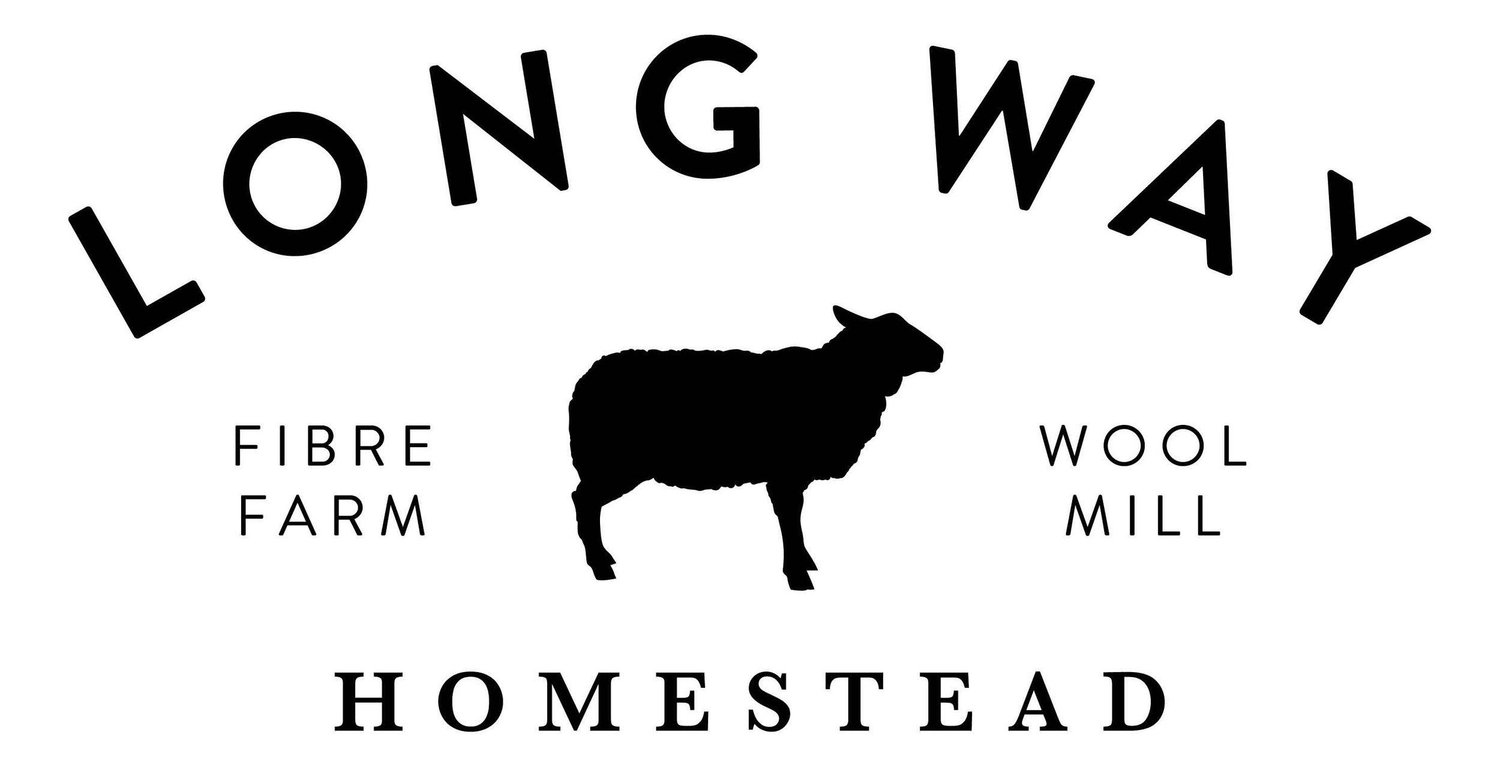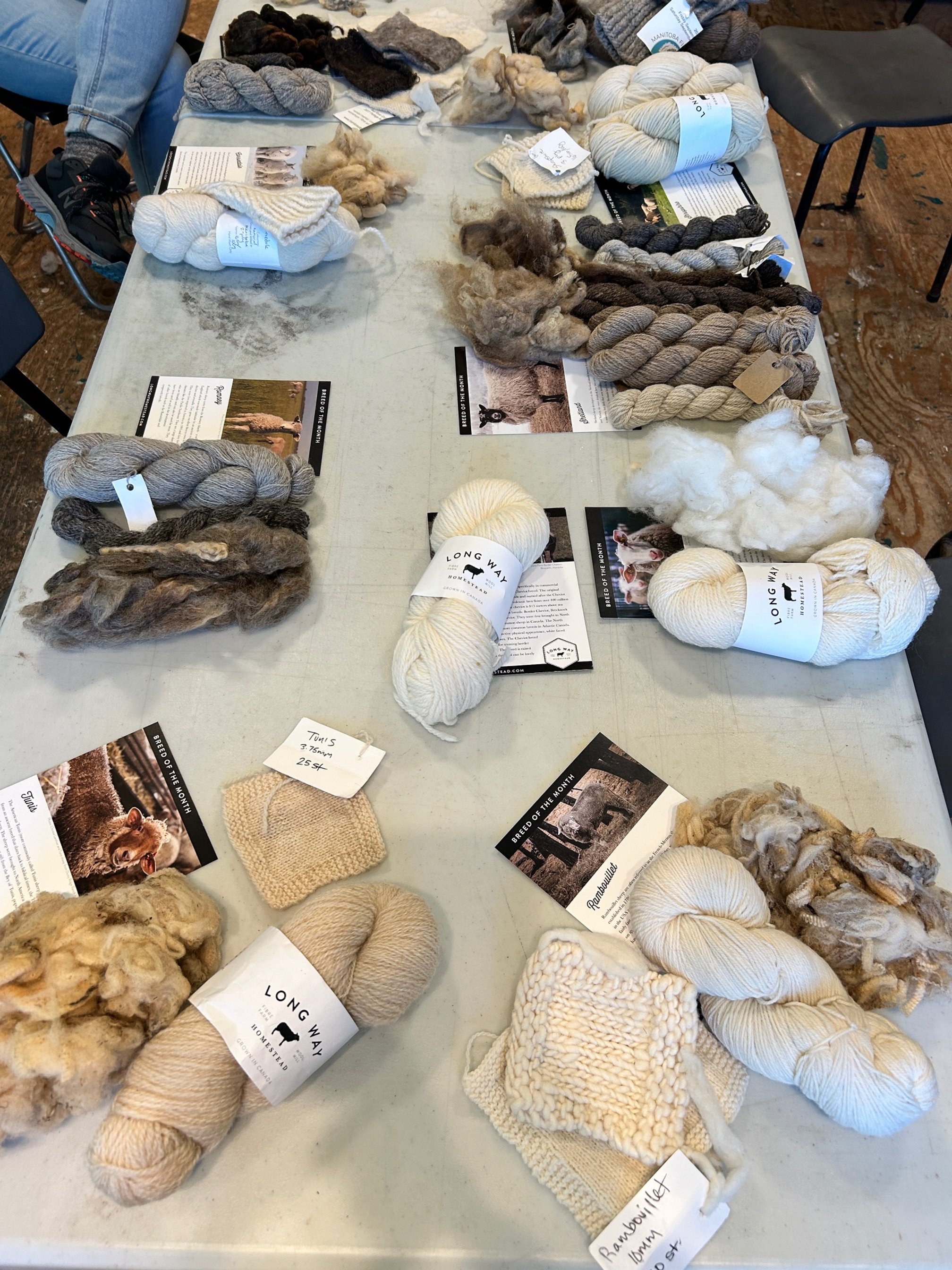Our inagural sheep & wool camp happened in June of 2024 and we are so honoured to have this recap and reflection from one of our participants of that very special week! (Thank you Jane)
It's September, and I've been catching up with friends who I haven't seen for a few months. Inevitably, someone asks, how was your summer? What did you get up to? And my response is always: I had a fantastic summer. And it all started with me going to Sheep and Wool Camp in Manitoba!
And then I wait for it. The awkward moment where my friend's inner voice is asking, what???? did she say Sheep and Wool Camp? And, every time, no matter who I'm chatting with, the next thing out of their mouth is - oh, so you learned to shear sheep, and did some sheep shearing?
So now I've prepared my "Top 10 Takeaways" and my answer isn't "no, I did not learn to shear sheep, I think you have to go to sheep shearing school for that!" but rather, "I learned so much, and let me tell you about some of it .
But first, a little context. I live in a city, on the west coast of Canada. I am an advanced beginner knitter and am still trying to understand the difference between DK, sport and worsted weight! I am a proud Canadian and like to support local. I am passionate about community and working together to make great things happen.
And that's why I registered for Sheep and Wool Camp: to learn from two Canadian shepherdesses (Anna and Christel) who are all about all of the above!
So, what did I learn at camp?
The term regenerative farming
Not sustainable farming - that means the land is in a steady, static state. Regenerative farming means the soil is restored, biodiversity grows, water and carbon are absorbed. That sure is good stuff for our planet! Anna and Christel told us: "We are not sheep farmers, we are grass farmers".
2. The grass is greener on the other side of the fence!
Long Way Homestead and Ferme Fiola use this nifty, easily movable temporary electro net fencing to create pasture for their flock (that's what the sheep herd is called). And we campers got to help move the fence. As soon as the sheep spotted us coming into their current pasture, they started bleating and nuzzling up to us, because they knew they were going to finally be able to graze on that grass that is on the other side of the fence!
We campers also got to sort out a fence that had been stored hastily and was all tangled up, just like yarn barf!
3. OK – just gonna say it - sheep are amazing, and adorable
Sheep produce meat, wool and milk! FYI - I knew that before camp. Most sheep farmers are raising sheep for meat. Wool from their sheep is a byproduct of the annual shearing. But there are more and more farmers raising sheep for their wool. I learned that the cheese from ewe milk (fromage de brébis – so delicious) industry is highly regulated in Canada.
Sheep are social. For obvious reasons, your ram is kept separate from your ewes. But you can't keep him on his own. You'll need another ram. He won't survive without the company!
Sheep don't like to let you know that they are sick. You really have to put your hands on your sheep regularly. Feel their spine, top of their tail, their ribs.
4. So many breeds of sheep
Samples of the breed wool - Sheep & Wool Camp 2024
I can't list them all here but from Romney to Clun Forest, from Shetland to Polypay, they are each unique in terms of wool – fine and long wools, down wool, dual coated wool. And each wool lends itself to a specific use – some better for felting, or for next to skin garments. There is colour variation in the wool from breed to breed.
Some breeds are better meat breeds. Some are rare breeds. Some are good for pasturing while others prefer to range. And, this I so love, the ewes of some breeds are really good mamas!
5. "What's with the llamas?"
When we "went out on the land" to walk among the sheep on day one of camp, there were a couple of llamas in both Anna and Christel's flocks. I finally asked the question. And was surprised by the answer. The llamas protect the flock. They are big and tall. And scare off predators like foxes. The llamas graze on the same land so you're not having to accommodate a special diet.
6. The bugs ARE big in Manitoba!
We arrived at camp after two weeks of non-stop, and heavy rain. Lots of swamp and puddles for mosquitoes to lay eggs, hatch and thrive. The bugs were awful. But no fear, Anna and Christel introduced us to wormwood (Artemisia absinthium) . This grass is a natural insect repellent that conveniently grows in the fields in Manitoba. Just pick a sprig or two and tuck it in your pocket and you're, more or less, bug free for a few hours.
7. Indigo go go!
I knew nothing about natural dying. Plants in various stages of growth and decay will result in pink, marigold, orange, fushcia, red. Indigo dye is the coolest. Anna grows indigo at Long Way Homestead. She made a vat of dye – a beautiful green colour. We chose our skeins of yarn (I chose three: a white, a light and a dark grey), put them carefully in the vat – you don't want to let oxygen into the dye. You wait. And then – you just as carefully pull out the skein. As it is exposed to oxygen …. it magically turns blue!
8. Fibreshed
Our shepherdesses, and a local alpaca farmer, kept talking about the Pembina Fibreshed. I finally asked what that was all about. They told me that a woman named Rebecca Burgess (American from California) was looking to understand how clothing can be locally grown, produced, designed and made. Kind of like the "100-mile diet", but for fibre. She came up with the term "fibreshed". After camp I did a bit more research and there are fibresheds everywhere! If you live in Canada, check out the Canadian Fibreshed Network to learn of your fibreshed, the members and their activities and advocacy work.
We campers toured the mill at Long Way Homestead – it was more like pivoting on the spot – to see raw fleece cleaned, dried, picked, carded, drawn, spun, plied, steamed and wound onto cones. And who knew, this mini mill was manufactured right here in Canada, in PEI! Belfast Mini Mills is recognized around the world for its small mills that can fit inside a standard garage.
10. It's tough for Canadian wool growers – but it's getting better!
The shepherdesses shared some sobering numbers about sheep farmers and how little money they make for their fleeces. Most raise sheep for meat. But they do need to shear their animals every year. And that's means there is a lot of wool produced. For these sheep farmers, it is not worth it for them to sell the fleeces, and they often end up throwing out their annual "clip" – wool that is perfect for clothing, bedding or insulation.
And if you're a farmer who is raising sheep for wool? Where can you go to get a decent price for your fleece? How can you make a living?
Well, the good news is, things are changing. Thanks to people like Anna and Christel, and things like Sheep and Wool Camp, folk are becoming more aware of how important it is to buy local and are searching out their local fibre producers. And now there is this: Canadian Wool Certification – a logo wool producers can put on their products so we know the wool was grown and manufactured in Canada.
I hope my ramblings have made you curious, inspired you or at least amused you.
Do you want to go to Sheep and Wool Camp next year? I sure want to go back! Hope to see you there!
Jane













